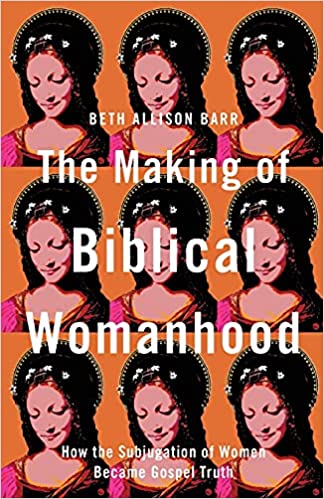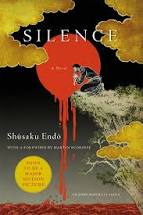CFP: Race and Representation in Mormon Art
By July 20, 2021
See a call for proposals on race and representation in Mormon Art. If you have questions, please contact Heather Belnap (BYU) and Nathan Reese (University of West Georgia).

By July 20, 2021
See a call for proposals on race and representation in Mormon Art. If you have questions, please contact Heather Belnap (BYU) and Nathan Reese (University of West Georgia).

By July 19, 2021
Thanks to Brooke LeFevre for this review!
It did not take long after I started reading The Making of Biblical Womanhood: How the Subjugation of Women Became Gospel Truth for me to be completely hooked. Really, it was on page 6 in the Introduction. Barr told the story of what inspired her to write the book—her husband’s dismissal from his job as a youth pastor. Barr, a historian of medieval Christianity, had long recognized issues with the idea of Biblical womanhood as it was taught in her Southern Baptist faith, but she had stayed silent for a myriad of reasons. Finally, she could not stay silent anymore. Barr wrote, “By staying silent, I had become part of the problem. Instead of making a difference, I had become complicit in a system that used the name of Jesus to oppress and harm women.”[1]

For me, those sentences spoke to an internal wrestle I was already having. You see, I had been thinking a lot about Eliza R. Snow. Eliza is, I think, a fascinating case study for the negotiations of patriarchy within nineteenth-century Mormonism.[2] Snow was not what we would consider a feminist. She did not believe in equality between men and women. She upheld the authority of men in the church over women and she taught that wives should submit to their husbands. However, she had a powerful voice within the church and used her voice to help dismantle or counter some patriarchal teachings and encourage women to obtain educations, pursue careers, contribute to the economy, and other things that we might look back on and praise for their feminist underpinnings. Eliza made a real difference in the church. But at what cost? Eliza, it seems, had to uphold the authority and superiority of male power within the church to be given space for her voice to be heard. She was, to some degree, complicit in a system that oppressed women.[3]
I had been wondering if that was still true today. Do women in the LDS Church today still have to support patriarchal systems to have a voice? Is the possibility of having a powerful enough voice to enact real change worth the risk of complicity in an oppressive system? I still do not have answers to those questions. But Barr’s book inspired me to think more critically about ideas surrounding womanhood within Christianity.
By July 15, 2021
Thanks to Stephen Betts for this stimulating post!
“The inability to conceive of its own devastation will tend to be the blind spot of any culture.”
—Jonathan Lear[1]
Chief Plenty Coups: Visions at the “End of History”
In the late 1920s, only a few years before his death, the great Crow chief Plenty Coups related his life’s history to his friend, the white ethnographer Frank Bird Linderman, who recorded that,
Plenty Coups refused to speak of his life after the passing of the buffalo, so that his story seems to have been broken off, leaving many years unaccounted for. ‘I have not told you half of what happened when I was young,’ he said, when urged to go on. ‘I can think back and tell you much more of war and horse-stealing. But when the buffalo went away the hearts of my people fell to the ground, and they could not lift them up again. After this nothing happened.’[2]
By July 9, 2021

Reading Endo’s Silence, recently made into a movie by Martin Scorsese, I was stuck by a mention of a Mormon theological concept. The story takes place in early seventeenth-century Japan, so it doesn’t mention Mormons specifically, but does mention a Mormon idea when discussing the theology of the Japanese Christians.
Silence focusses on Jesuit priests Rodrigues and Garrpe sailing to Japan after having heard that their mentor and hero, father Ferreira, had apostatized under torture. Silence is based on the history the harsh measures the Japanese government took toward crushing Japanese Christianity after the Shimabara Rebellion of 1638, driving Christianity there underground. Endo based the characters of Rodrigues and Ferreira on the actual Jesuit priests, Chiara and Ferreira, who did apostatize during the persecution. Endo himself came out of the Japanese Catholic community who saw the Japanese “Hidden Christians” as heroes and the apostate priests and not truly committed. Endo thus novelizes these Jesuits’ stories.
The Mormon theology comes in the buildup to the climax of the story after the Japanese capture Rodrigues and bring him to Ferreira so that Ferreira can convince Rodrigues to apostatize. Ferreira first begins by explaining the tortures he’s undergone before moving to his central arguments: “The one thing I know is that our religion does not take root in this country” (157). Rodrigues protests that the plant has been torn up and that Christianity flourished in Japan before the crackdown.
By July 5, 2021
The New-York Historical Society invites candidates with a humanities MA or PhD to apply for the position of Public Humanities Fellow in connection with the traveling exhibit Acts of Faith: Religion and the American West, which opens at the New-York Historical Society in New York City in November 2022.
We are looking for candidates with significant expertise in 19th century religion, particularly as it relates to Native American religion and spirituality. Applicants must have graduated from a humanities MA or PhD program (including public history and museum studies) within the last five years, and have a desire to practice publicly engaged scholarship. This is a two-year, full-time position, with the anticipated dates of Sept. 2021 through Aug. 2023, and the possibility of remote work during the first year. The position comes with a National Endowment for the Humanities stipend of $50,000 per year plus benefits. Some travel may be required.Applications will be considered on a rolling basis until the position is filled. For more information and to apply for the fellowship, click here.

By July 1, 2021
To commemorate the upcoming completion of the Revelations and Translations series, which includes the breadth of Joseph Smith’s revelation and translation projects, the Joseph Smith Papers Project will host the fifth annual Joseph Smith Papers Conference on September 10, 2021. The conference will be broadcast digitally to allow for both local and global participation from presenters and audience members. (This was also the format of the 2020 conference.) The theme for this year’s conference is “Joseph Smith and Sacred Text in Nineteenth-Century America.”
This event is free to attend, but space is limited. Please register only if you plan to attend; your courtesy will help us keep this conference series free.
Find the program and registration links here: https://www.josephsmithpapers.org/articles/2021-joseph-smith-papers-conference-registration.
© 2024 – Juvenile Instructor
Recent Comments
Christopher on LATTER-DAY SAINT THEOLOGY &: “Blake, I get a kick out of your poor reading comprehension skills. If your comment is directed to Joseph, who posted this description, please understand that…”
Eric Nielson on LATTER-DAY SAINT THEOLOGY &: “Matt, I have signed up with a friend account, but when I try to open the file I am told that I do not have…”
Terry H on LATTER-DAY SAINT THEOLOGY &: “I mean, I know its in the link, but just curious.”
Terry H on LATTER-DAY SAINT THEOLOGY &: “Perhaps I missed something, but when and where is it?”
Matt Witten on LATTER-DAY SAINT THEOLOGY &: “This one? https://deepblue.lib.umich.edu/handle/2027.42/157453”
Eric Nielson on LATTER-DAY SAINT THEOLOGY &: “I would like to read Paulsen's dissertation. Does anyone have some link or way to access it?”